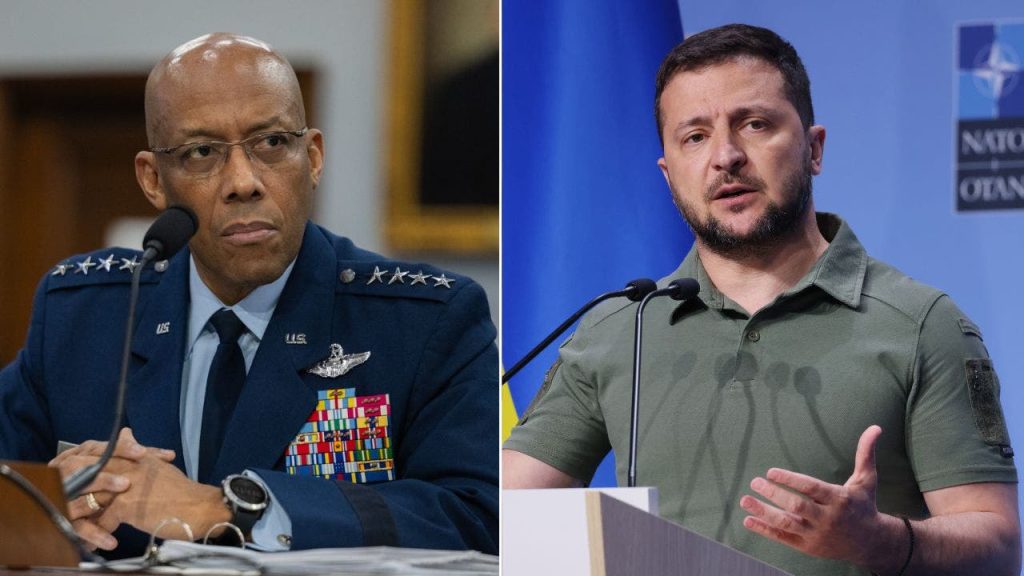Gen. Charles Brown, the Chairman of the Joint Chiefs of Staff, has expressed that NATO military trainers will soon be deployed to Ukraine to help train 150,000 new recruits closer to the front lines for faster deployment. This decision comes as Ukraine faces ongoing battles against Russian offensives in various regions of the country. The U.S. recently agreed to send an additional $60 billion in aid to Ukraine, further emphasizing the need for support from NATO allies in the training of Ukrainian troops. The issue of manpower has long been a challenge for Kyiv’s military, necessitating the deployment of trainers to assist in addressing this issue.
In an effort to bolster its military forces, Ukraine has introduced stricter measures for draft evaders and lowered the draft mobilization age. A new law now offers parole to convicts who sign a contract to join the army, potentially generating up to 20,000 additional soldiers for the war efforts. However, these new recruits will need to undergo training before they can effectively contribute to the conflict. Ukrainian President Volodymyr Zelenskyy has called on Western nations, including the U.S., to provide assistance in this regard. The decision to deploy trainers closer to the front lines could draw the U.S. and Europe more directly into the conflict with Russia, raising concerns about the potential risks involved in such a move.
Former President Eisenhower’s decision to send U.S. advisors to train forces in South Vietnam as a countermeasure against the spread of communism serves as a relevant historical parallel. The gradual escalation of U.S. military involvement in Vietnam following the deployment of advisors underscores the potential implications of sending military trainers to Ukraine. The possibility of U.S. and NATO trainers being at risk in the conflict raises concerns about how to protect them and balance the need for air defenses to safeguard critical Ukrainian infrastructure near the battlefield.
While the specific NATO countries considering sending military trainers to Ukraine, and the duration and extent of the deployment remain unclear, there are indications of support from European leaders. French President Emmanuel Macron has not ruled out the possibility of European Union member states sending troops into Ukraine to counter Russia’s invasion. The latest Russian offensive in Ukraine’s Kharkiv region, along with ongoing developments in the Donetsk region, highlight the critical stage of the conflict for Ukraine’s weary armed forces. In response to the escalating situation, Ukraine recently conducted its largest kamikaze drone attack on Russia, resulting in casualties and damage.
The potential deployment of NATO military trainers to Ukraine represents a significant step in the ongoing conflict with Russia. The decision to provide additional training support to Ukrainian forces underscores the urgent need to bolster the country’s military capabilities in the face of continued Russian aggression. As the situation remains volatile and the conflict enters a critical stage, the involvement of NATO allies in training and assisting Ukrainian troops could have far-reaching implications for the region and the global security landscape. The need to navigate complex geopolitical dynamics and ensure the protection of trainers in a conflict zone further complicates the decision-making process surrounding this deployment.


